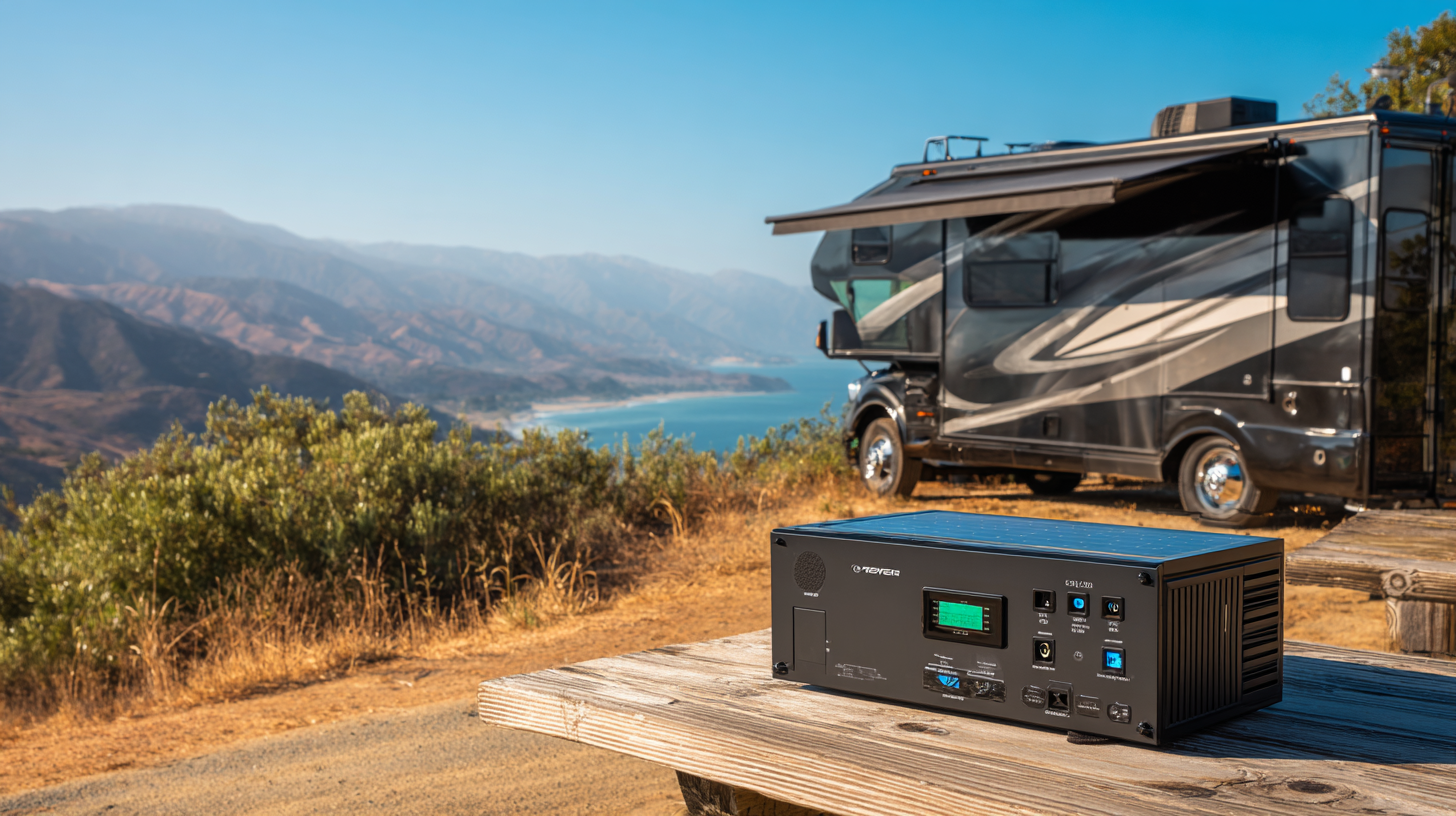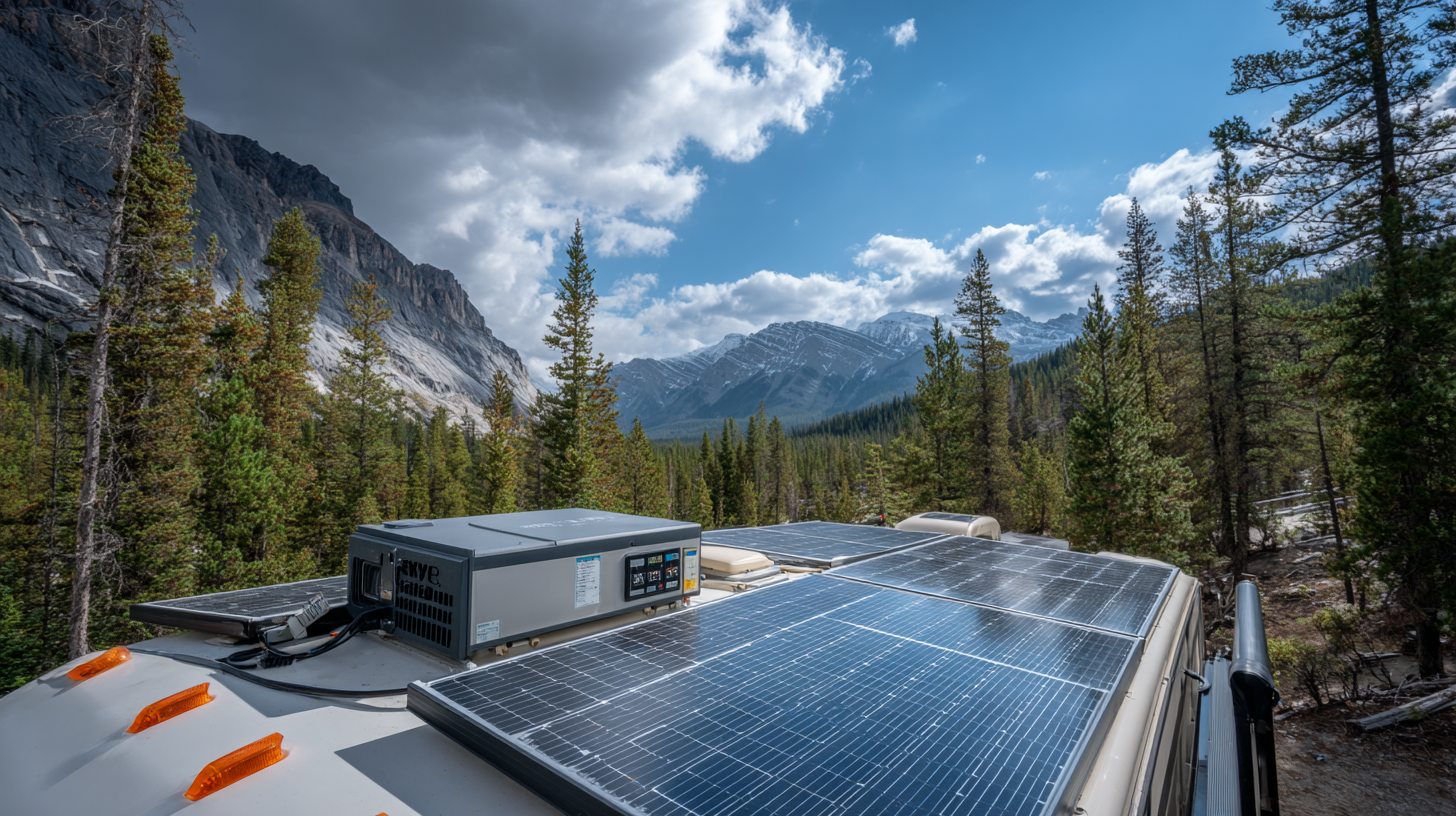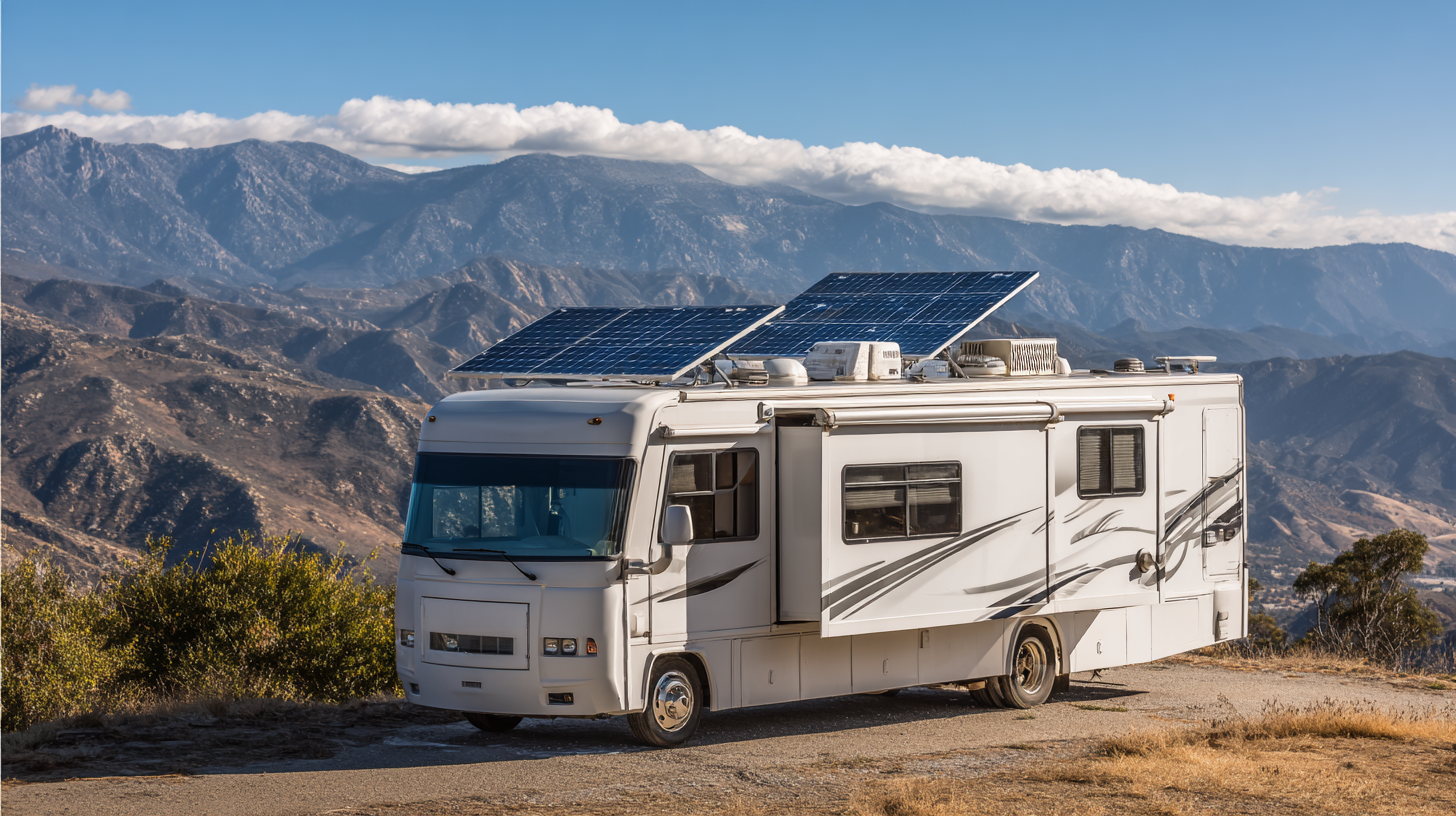
As the popularity of recreational vehicles (RVs) continues to surge, with an estimated 11 million households in the U.S. owning an RV as reported by the RV Industry Association, the need for efficient energy solutions has never been more critical. Among these solutions, the RV solar inverter plays a pivotal role in transforming solar energy into usable power for all your travel needs. However, choosing the best RV solar inverter can be daunting, as various types come with their own sets of advantages and challenges. According to a recent industry report, improper inverter selection can lead to energy inefficiencies, impacting overall power consumption and battery life. This guide aims to navigate the complexities surrounding RV solar inverters, helping adventurers make informed decisions that enhance their journeys while minimizing problems associated with inverter types.

When embarking on an RV adventure, understanding the functionality of solar inverters becomes crucial. An RV solar inverter transforms the direct current (DC) generated by solar panels into alternating current (AC), which is necessary for running everyday appliances.
The efficiency and reliability of an inverter can greatly affect your power supply, enabling you to enjoy your adventures
without the constant worry of energy depletion.
Different models offer various features tailored to specific needs. For instance, pure sine wave inverters
provide a smooth, consistent power output ideal for sensitive electronics, ensuring they operate optimally without risk of damage.
Meanwhile, modified sine wave inverters are a more budget-friendly option suited for less sensitive devices,
though they may not deliver the same level of performance.
Assessing your energy consumption and appliance requirements is key to selecting the right inverter that suits both your needs and your lifestyle on the road. By comprehensively understanding these functionalities, you can make informed decisions that enhance your RV experiences.
When choosing the best RV solar inverter for your adventures, understanding key features is crucial for optimal performance and reliability. One essential aspect is the inverter type. There are primarily two types: modified sine wave and pure sine wave inverters.
 Pure sine wave inverters are recommended for RV applications due to their ability to provide a stable and clean power supply, which is especially important for sensitive electronics. According to a report by the Solar Energy Industries Association (SEIA), pure sine wave inverters are more efficient and can increase the lifespan of your appliances by 25-30%.
Pure sine wave inverters are recommended for RV applications due to their ability to provide a stable and clean power supply, which is especially important for sensitive electronics. According to a report by the Solar Energy Industries Association (SEIA), pure sine wave inverters are more efficient and can increase the lifespan of your appliances by 25-30%.
Another vital feature to consider is the inverter’s wattage rating. The total wattage your inverter can handle determines how many devices you can power simultaneously. For instance, the average travel trailer requires around 600 to 1200 watts, depending on the appliances used. Industry insights indicate that investing in an inverter with a capacity 20-30% above your estimated needs can provide a buffer for short-term surges in power usage. Additionally, look for inverters with built-in safety features like short circuit protection and thermal overload protection, which can safeguard both the inverter and the RV's electrical system, ensuring peace of mind on your journeys.
When it comes to choosing the right solar inverter for your RV adventures, understanding the different types available is crucial. The three main categories are modified sine wave inverters, pure sine wave inverters, and hybrid inverters. Modified sine wave inverters are often favored for their affordability, typically costing 30-50% less than pure sine wave options. However, they can produce less optimal performance with sensitive electronics, which can lead to issues when powering devices like microwaves and audio equipment.
On the other hand, pure sine wave inverters emulate grid power, ensuring compatibility with all electronic devices, which is vital for those who rely on technology while on the road. They usually range from $100 to $1,000 or more, reflecting their superior performance and reliability. According to the Solar Energy Industries Association, demand for these inverters has surged, with the market projected to grow at a CAGR of 20% over the next five years. Hybrid inverters, combining features of both, offer flexibility for integrating battery storage systems, making them an excellent choice for off-grid setups. However, they can come with a higher initial investment, which is something potential RV owners should consider in their decision-making process.

When installing an RV solar inverter, proper placement and connection are crucial for maximizing efficiency. Start by selecting a location that is cool, dry, and easily accessible for maintenance. Ideally, the inverter should be positioned close to the battery bank to minimize voltage drop, ensuring optimal performance. Avoid placing the inverter near appliances that generate heat, which could impact its functionality.
Another important tip is to ensure that all connections are secure and well-insulated. Use high-quality cables and connectors that can handle the power requirements of your system. Properly sizing the cables is essential; too small of a cable can result in overheating and power loss. After installation, take the time to check all connections and settings to confirm that everything is properly configured before hitting the road.
Lastly, don’t overlook the significance of proper ventilation. Inverters generate heat during operation, and adequate airflow helps prevent overheating. Consider integrating a cooling fan or ensuring that the location allows for air circulation. Monitoring the inverter's temperature during use will help you maintain optimal conditions for your solar system, ensuring a reliable power supply on your adventures.
When it comes to ensuring the longevity of your RV solar inverter,
regular maintenance is key. According to a recent report by the National Renewable Energy Laboratory (NREL),
neglecting routine checks can shorten the lifespan of solar inverters by up to 30%.
To mitigate this risk, it’s essential to keep an eye on the inverter's performance metrics
and monitor any fluctuations in output, which could indicate underlying issues.
Tips: Schedule bi-annual inspections for debris accumulation,
including dust and dirt on the inverter and solar panels. Clean surfaces gently with a soft brush to avoid scratches.
Additionally, ensure that the inverter is installed in a shaded area to reduce overheating risks, as excess heat
can significantly impair its functionality.
Furthermore, update your inverter's firmware regularly. With innovations in technology,
manufacturers often release updates that enhance efficiency and fix bugs. A report from the
California Energy Commission notes that inverters
that incorporate the latest software improvements can operate up to 10% more efficiently.
Tips: Keep a log of your inverter's performance and maintenance activities, allowing you to
spot trends over time and take proactive measures before a minor issue escalates into a costly problem.